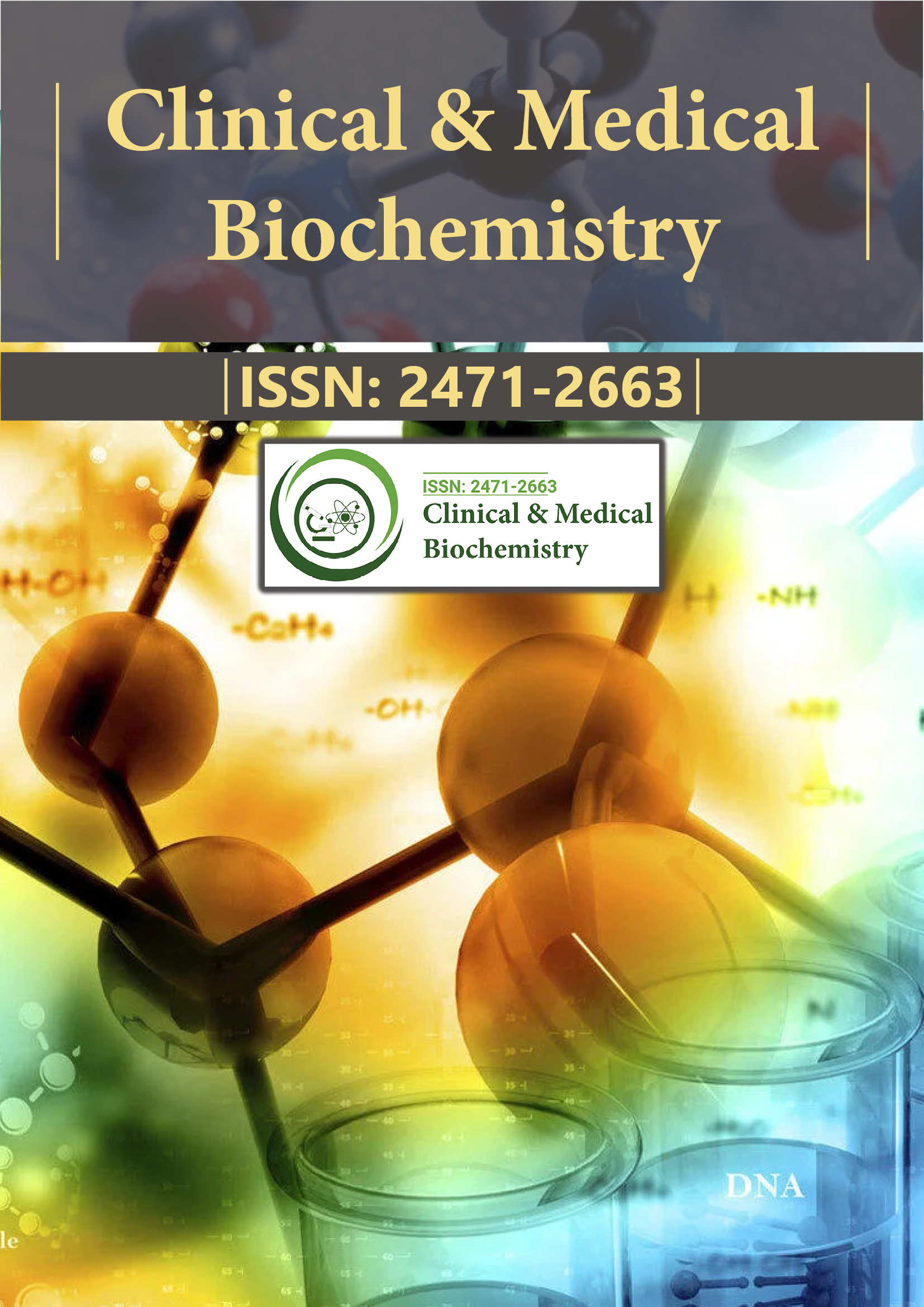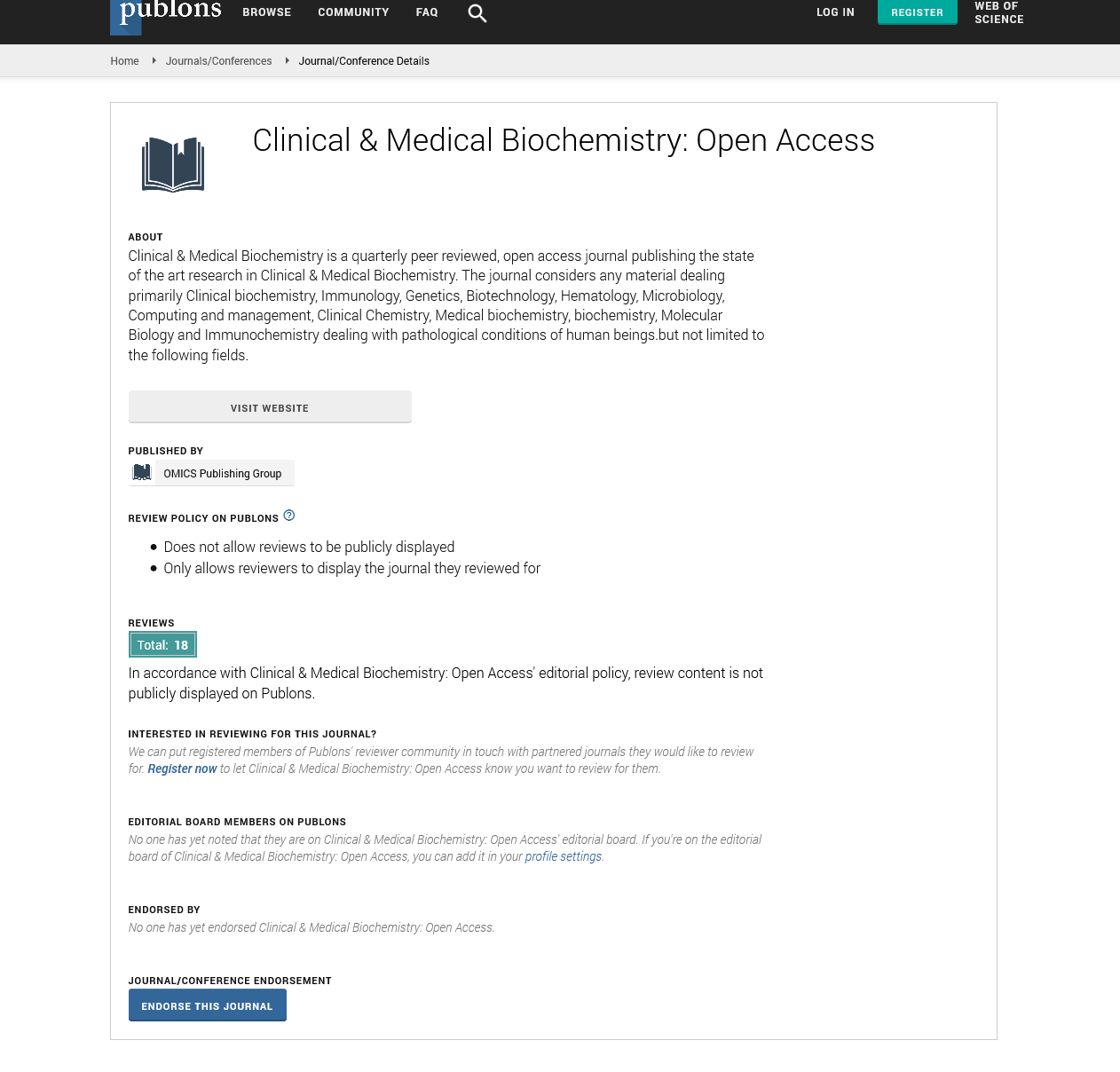Indexed In
- RefSeek
- Directory of Research Journal Indexing (DRJI)
- Hamdard University
- EBSCO A-Z
- OCLC- WorldCat
- Scholarsteer
- Publons
- Euro Pub
- Google Scholar
Useful Links
Share This Page
Journal Flyer

Open Access Journals
- Agri and Aquaculture
- Biochemistry
- Bioinformatics & Systems Biology
- Business & Management
- Chemistry
- Clinical Sciences
- Engineering
- Food & Nutrition
- General Science
- Genetics & Molecular Biology
- Immunology & Microbiology
- Medical Sciences
- Neuroscience & Psychology
- Nursing & Health Care
- Pharmaceutical Sciences
Perspective - (2022) Volume 8, Issue 3
Hypothalamus and Hypophysis Hormones Secretion and Role in Human Functioning
Received: 01-Apr-2022, Manuscript No. CMBO-22-16519; Editor assigned: 06-Apr-2022, Pre QC No. CMBO-22-16519 (PQ); Reviewed: 27-Apr-2022, QC No. CMBO-22-16519; Revised: 04-May-2022, Manuscript No. CMBO-22-16519 (R); Published: 11-May-2022, DOI: 10.35841/2471-2663.22.8.122
Description
FSH-Follicle Stimulating Hormone
FSH is a glycoprotein secreted by basophilic gonadotropin cells in the anterior pituitary gland. The function of FSH is to stimulate ovarian follicle growth and maturation. FSH, along with LH, supports oestrogen secretion and is involved in endometrial transformation during the proliferative phase of the menstrual cycle. FSH stimulation of Sertoli cells contributes to the maintenance of male spermatogenic epithelium and affects the synthesis of inhibin and binding protein for angrogens in the seminiferous tubules. Indications for the FSH assay are amenorrhea, dysmenorrhoea, oligomenorrhoea, infertility, primary and secondary hypogonadism, conditions following cytostatic treatment or radiation therapy, atypical sexual maturity in children, under pituitary traumas and tumors, gonadal dysgenesis and disorders of the hypothalamus-pituitary-gonad axis. LH and FSH assay are also important in diagnosing polycystic ovary syndrome. In polycystic ovary syndrome, FSH levels decrease or are normal, and LH levels increase, resulting in an increased LH/FSH ratio in contrast to healthy individuals. Elevated values are seen in the primary ovarian insufficiency, Turner syndrome, menopause, hypogonadism, and menopause and primary hypogonadism. Reduced levels are found in pituitary trauma and endocrine inactive tumors, anorexia nervosa, secondary ovarian insufficiency, and pseudopubertas praecox.
LH-Luteinizing Hormone
LH is a glycoprotein secreted by basophilic gonadal cells of adenohypophysis. The function of LH is to act on the ovarian cells, where stimulation of steroid synthesis occurs. With the help of FSH, the steroids will then convert to estradiol. In addition, LH is responsible for the final maturation of the ovarian follicles and also induces ovulation and early development of the corpus luteum with subsequent secretion of progesterone. In men, LH stimulates testosterone synthesis in the Leydig cells of the interstitial tissue of the testes.
Indications for the LH assay include amenorrhoea, dysmenorrhoea, oligomenorrhoea, infertility, primary and secondary hypogonadism, conditions following cytostatic treatment or radiation, atypical sexual maturation in children, pituitary traumas and tumours, gonadal dysgenesis, selected chromosome aberrations, and hypothalamicpituitary gonadal axis disorders. Elevated values can be found in primary ovarian insufficiency, Turner syndrome, climacterium praecox, gonadotropinomas, and physiologically elevated values in the menopausal period and primary hypogonadism in males. Reduced levels can be found in pituitary traumas and tumours, anorexia nervosa, secondary ovarian insufficiency and pseudopubertas praecox.
Oxytocin
Oxytocin is a peptide hormone produced primarily in the paraventricular nuclei of the hypothalamus, from which it is transported and deposited in the granules of nerve endings in the posterior pituitary gland. The function of this hormone is to act on the myoepithelial cells that line the outlets of the mammary gland and eject milk from the mammary gland. Another important function is the effect on the smooth muscles of the uterus during pregnancy, thereby enhances labor at the end of pregnancy. Analysis of this hormone is not common due to its low diagnostic importance.
ADH-Antidiuretic Hormone
ADH or vasopressin is another hormone stored in the posterior pituitary gland. This hormone is composed of nine amino acids. The basic physiological action of ADH is water retention in the body, so ADH is involved in body homeostasis. ADH is secreted as a result of increased blood plasma osmolality and has the function of increasing the permeability of the distal tubules, collecting the renal tubules and allowing water to enter the hypertonic renal interstitium. Secretion disorders or disorders at the peripheral receptor level manifest as diabetes insipidus with the inability of the kidneys to concentrate urine and have specific clinical impacts. The opposite situation occurs when ADH overproduction occurs at normal plasma osmolality after trauma or bleeding at the CNS. This condition is called inappropriate ADH secretion (SIADH). The indications for the ADH assay are diabetes insipidus and SIADH.
TSH-Thyroid-Stimulating Hormone or Thyrotropin
TSH is a peptide hormone synthesized by thyrotrope cells in the anterior pituitary gland. The function of this hormone is to stimulate thyroid cells to produce peripheral hormones, i.e. thyroxine and triiodothyronine. Secretion of this tropic hormone is partly regulated by direct inhibitory (negative) feedback caused by a high thyroid hormone level in the blood, which inhibits the adenohypophysis. A partial role is also played by neural mechanisms acting through the hypothalamus. The assay for this hormone is essential for the diagnosis of thyroid gland disorders. Elevated levels may be seen in hypothyroidism, subclinical hypothyroidism, after thyroidectomy, or in pituitary adenomas producing TSH. Reduced levels are found in hyperthyroidism, hypopititarism, and some non-thyroid diseases such as fever, myocardial infarction, severe trauma, and surgery.
ACTH-Adrenocorticotropic Hormone
ACTH is a hormone synthesized in adenohypophysis cells in the form of a precursor, Proopiomelanocortin (POMC). This precursor is subsequently cleaved by enzymes into several physiologically active peptides, one of them being ACTH. This hormone is the main hormone that regulates the production of glucocorticoid hormones in the adrenal cortex. Assays for this hormone are not common due to specific and complicated preanalytical factors, and are solely used in the diagnosis of adrenal cortex function disorders, in particular to distinguish between a primary and secondary disorder of cortisol secretion. Elevated levels can be found in primary hypercorticalism, Addison`s disease, adrenogenital syndrome, Cushing`s disease and adrenal damage. When feedback ACTH inhibition occurs, there is a reduced level in Cushing's syndrome.
STH-Somatotropin (GH-Growth Hormone)
STH is a polypeptide hormone produced by acidophil cells in the adenohypophysis. Secretion is regulated by the hypothalamus via regulatory hormones such as somatoliberin and somatostatins. The function of this hormone is to control and stimulate growth through various metabolic effects. The major effects include stimulating proteosynthesis and inducing a positive nitrogen balance. STH also has an anti-insulin effect, increasing the content of free fatty acids in blood plasma. The peripheral action of this hormone depends on the production of peptide growth factor known as somatomedins (IGF-1 and IGF-2). The indications for the STH assay are growth disorders, nanism or acromegaly. Elevated levels are found in gigantism, endocrine active pituitary tumors, and acromegaly. The reduced levels can be seen in nanism.
Citation: Jirsa V (2022) Hypothalamus and Hypophysis Hormones Secretion and Role in Human Functioning. Clin Med Bio Chem. 8:122.
Copyright: © 2022 Jirsa V. This is an open-access article distributed under the terms of the Creative Commons Attribution License, which permits unrestricted use, distribution, and reproduction in any medium, provided the original author and source are credited.

